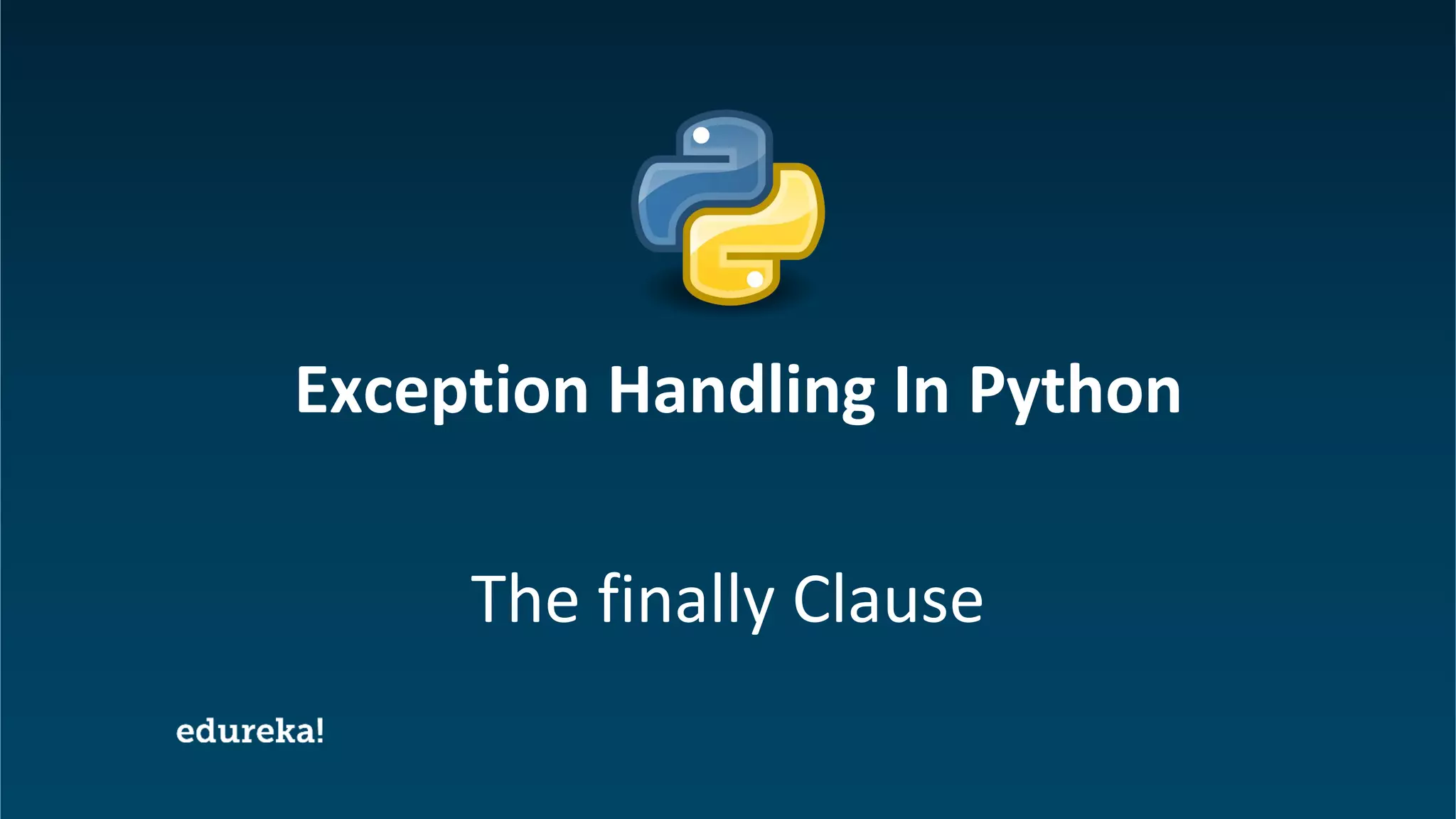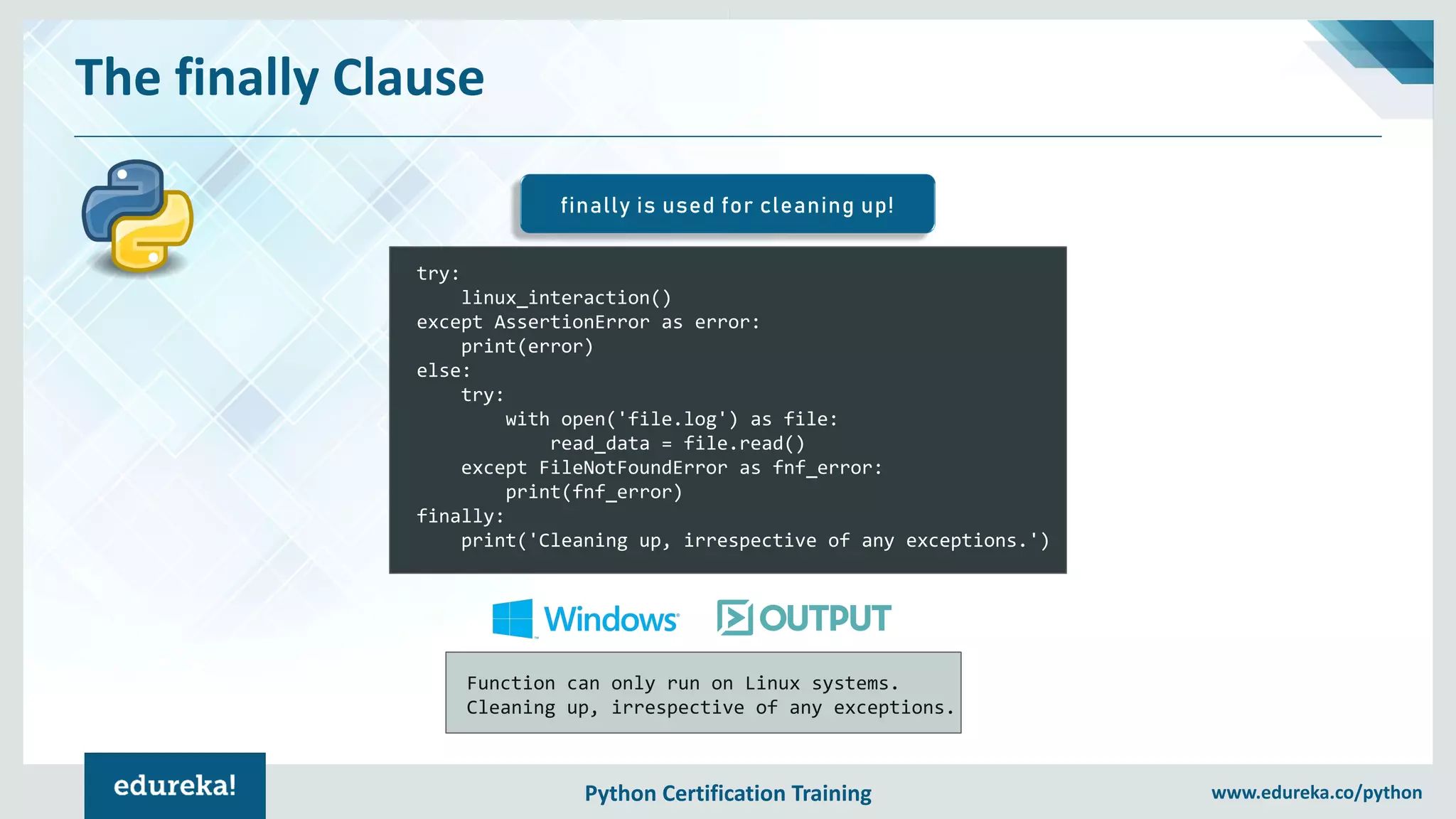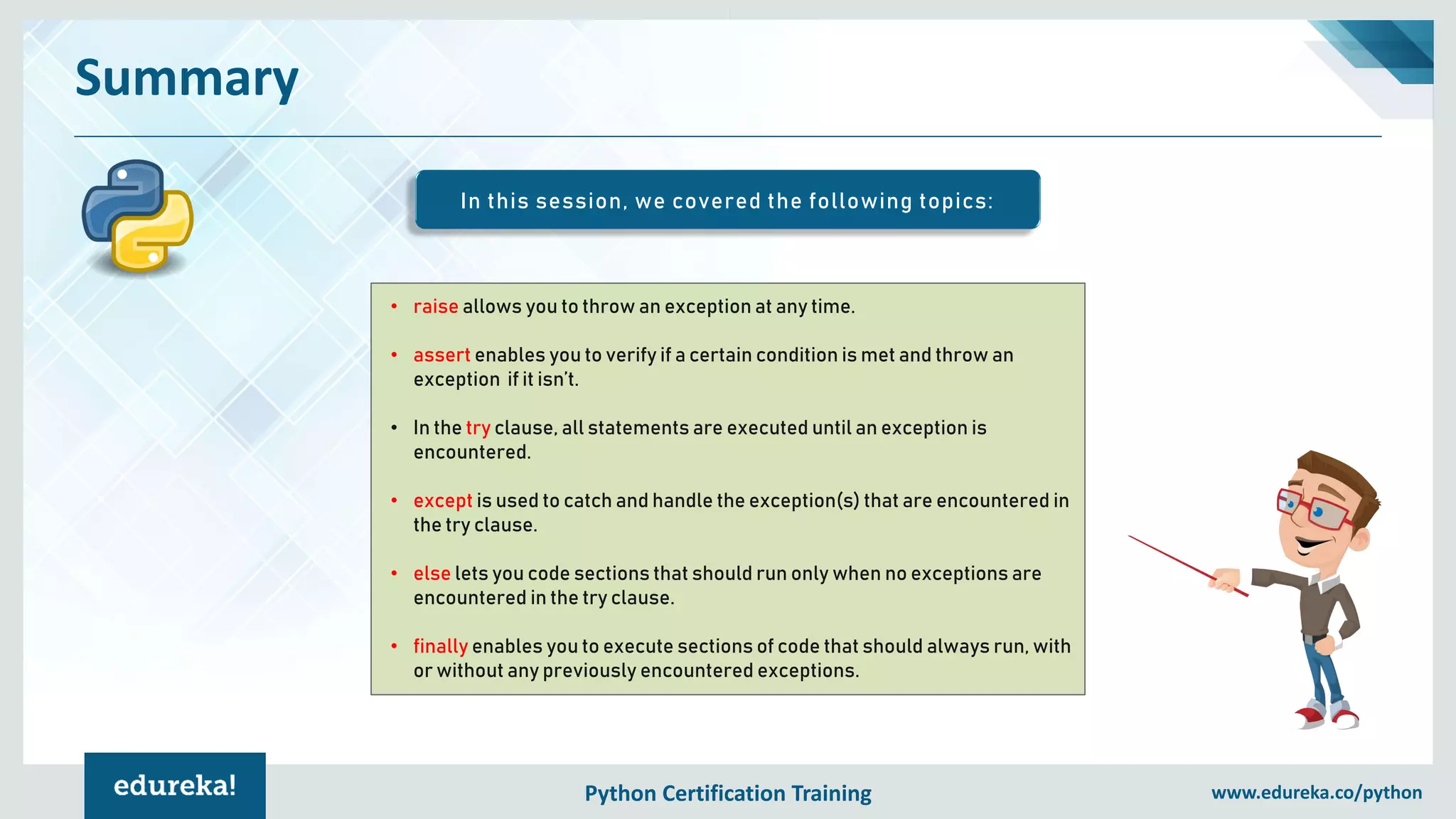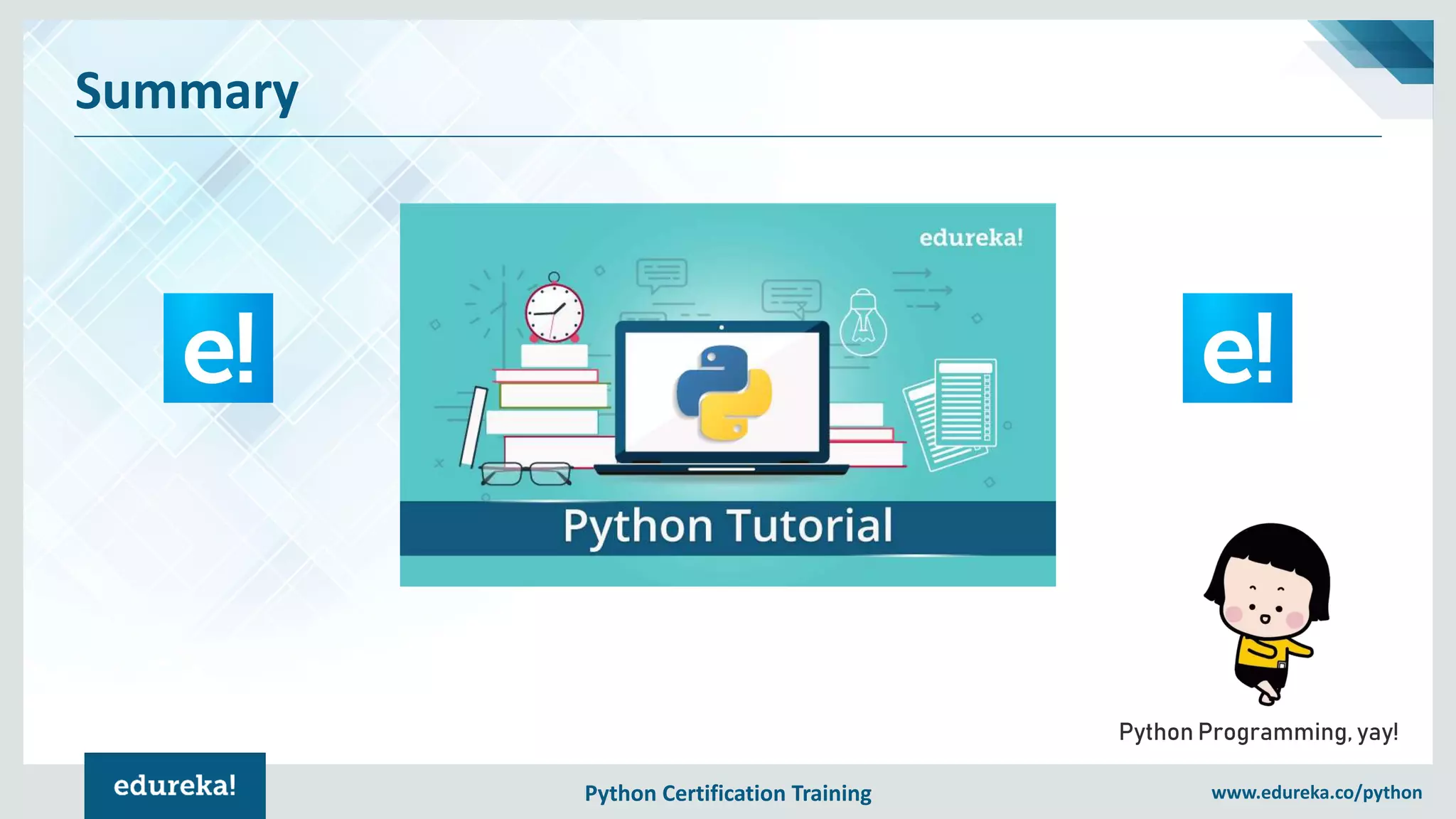The document provides an overview of exception handling in Python, explaining its purpose and outlining key concepts such as try, except, else, and finally clauses. It emphasizes the importance of handling exceptions to maintain program flow and prevent crashes. Key takeaways include using assert for assertions and raise to throw exceptions, along with examples demonstrating practical usage.

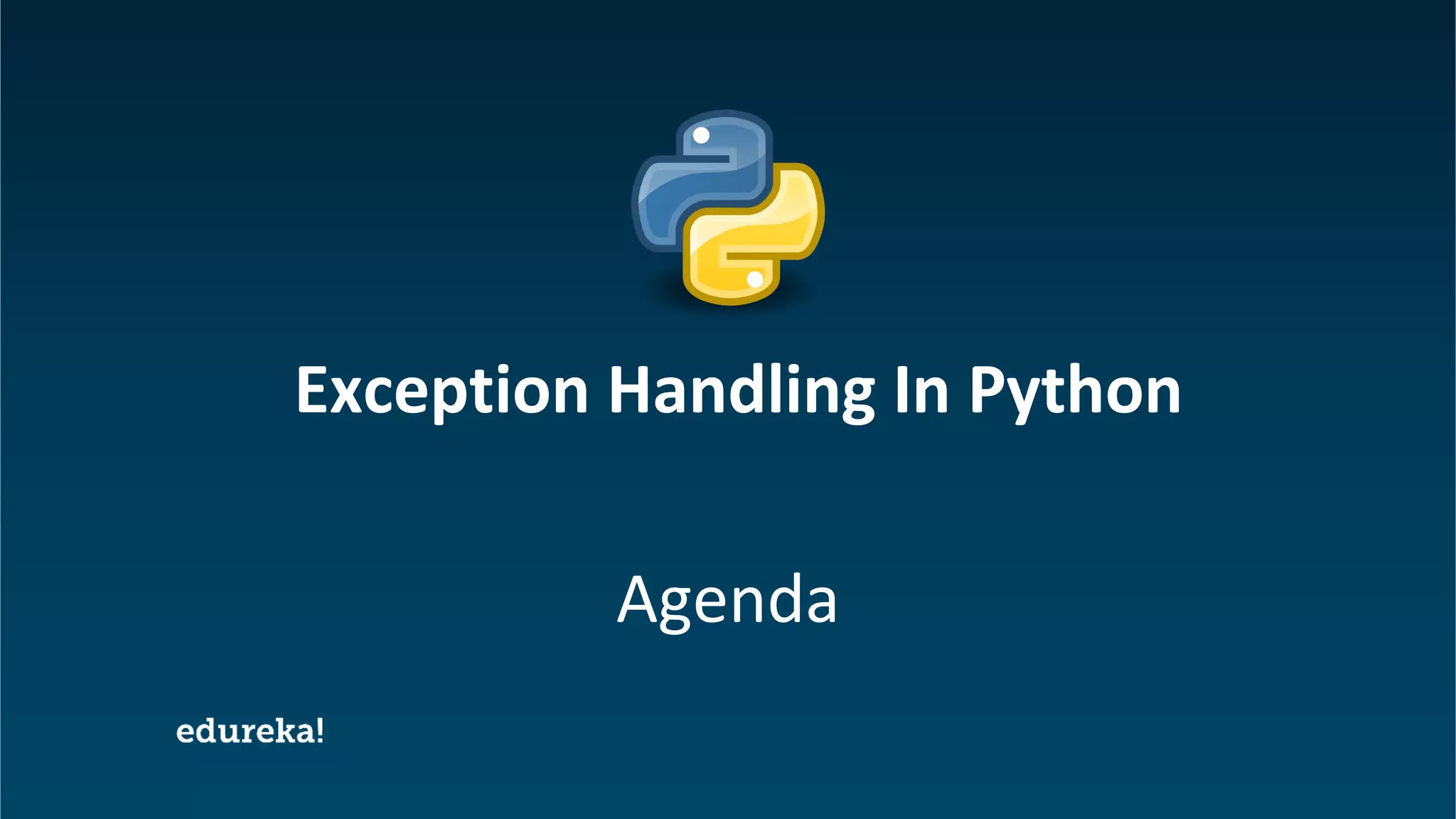
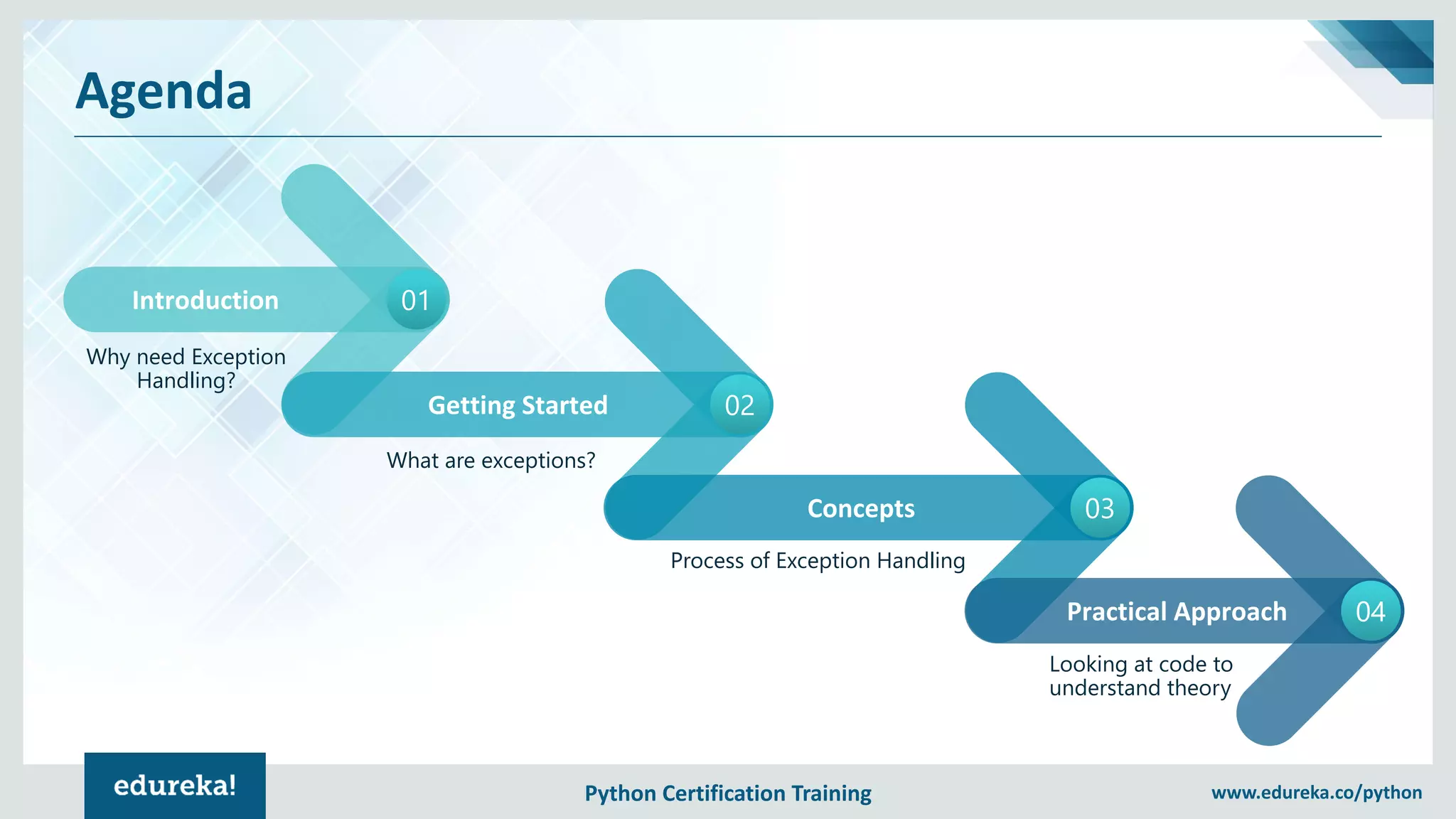
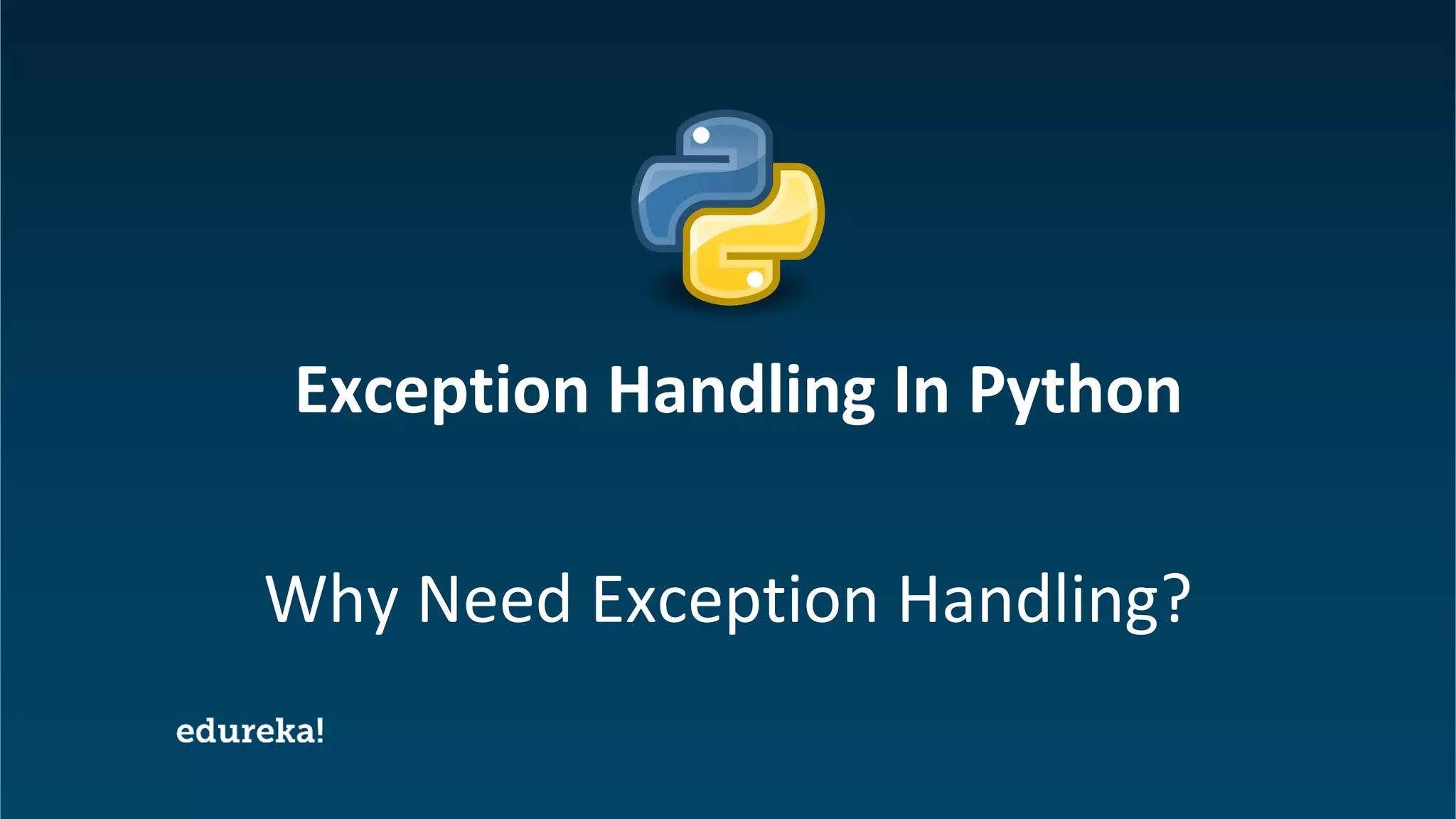

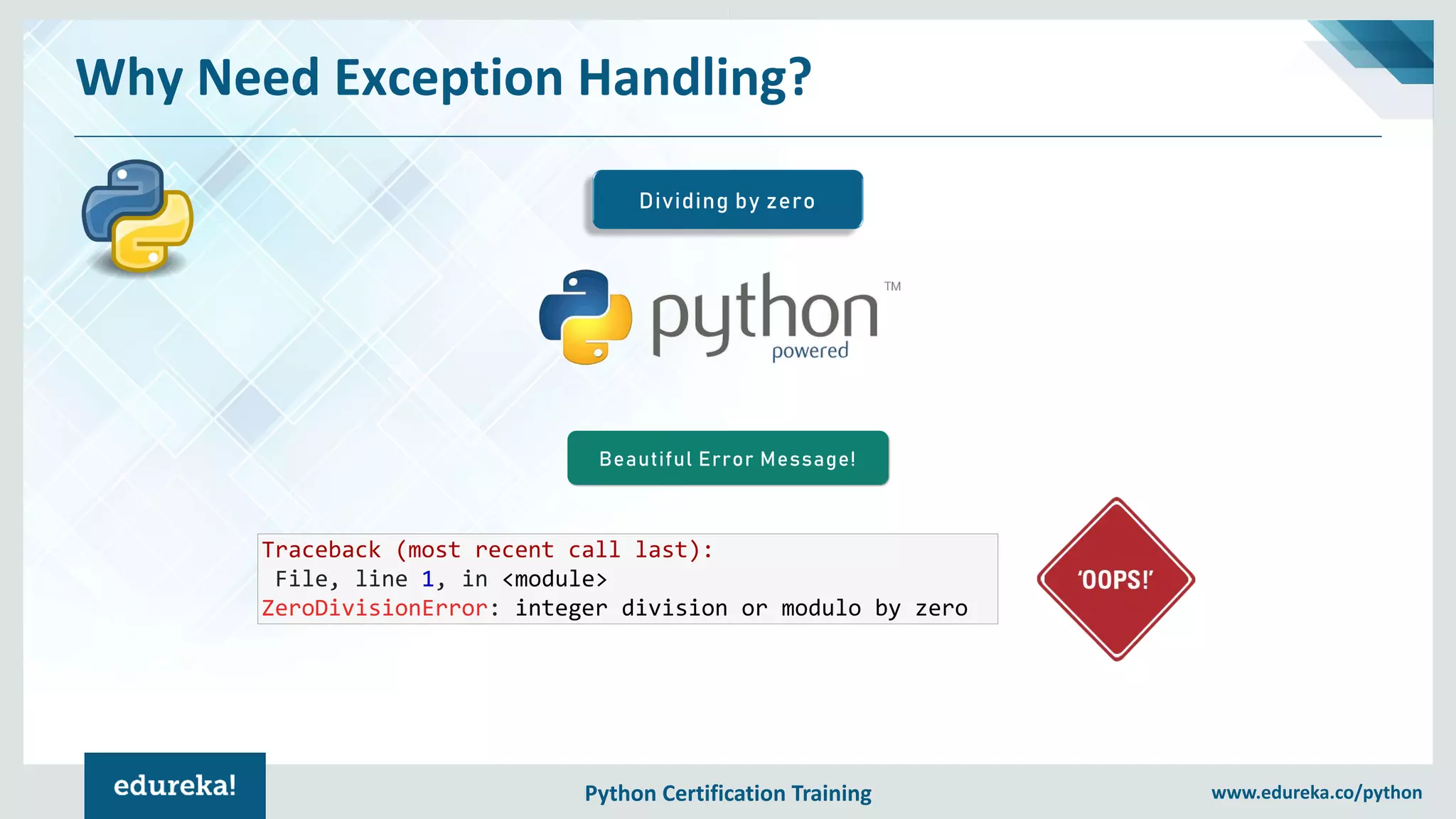
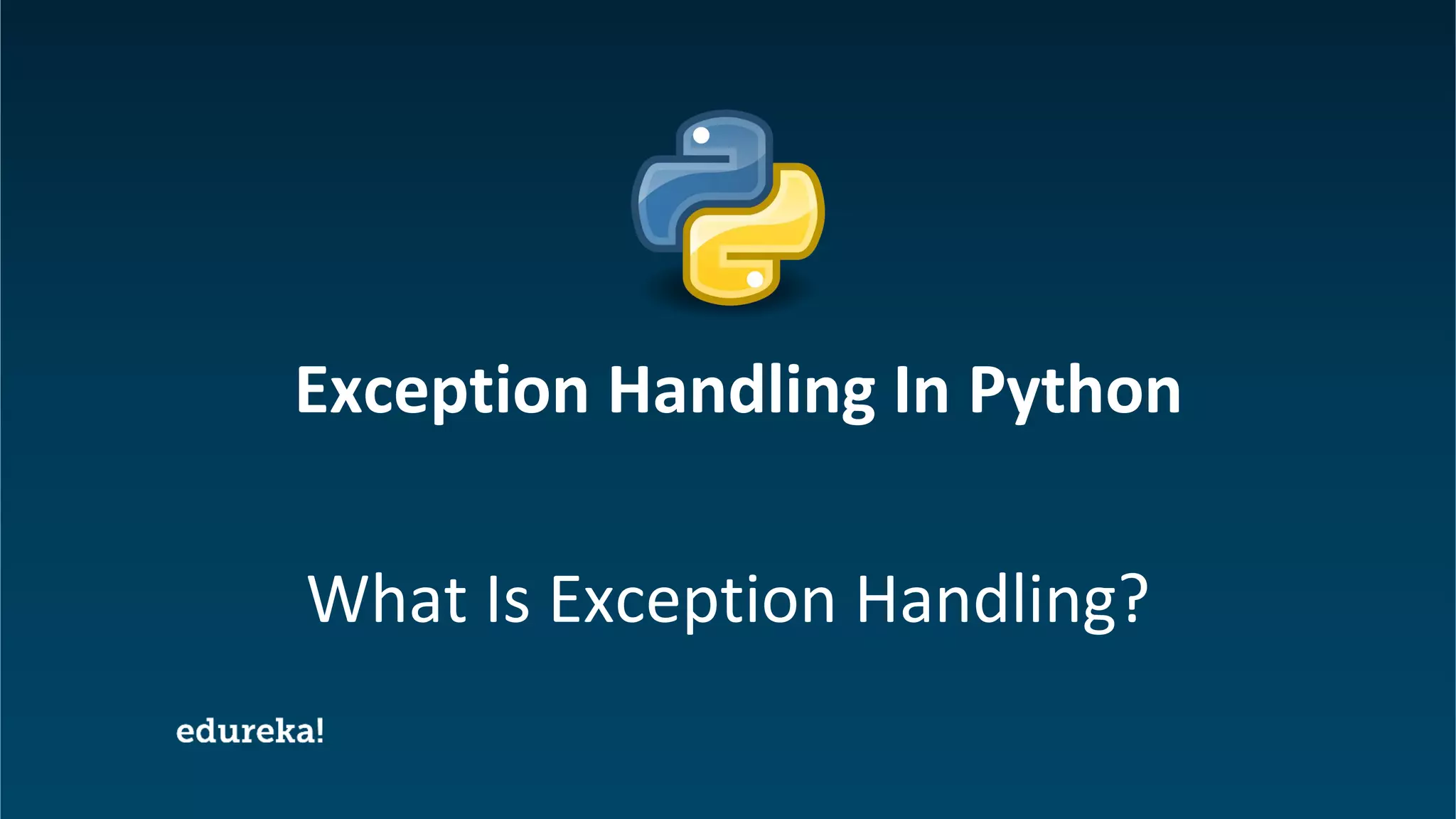
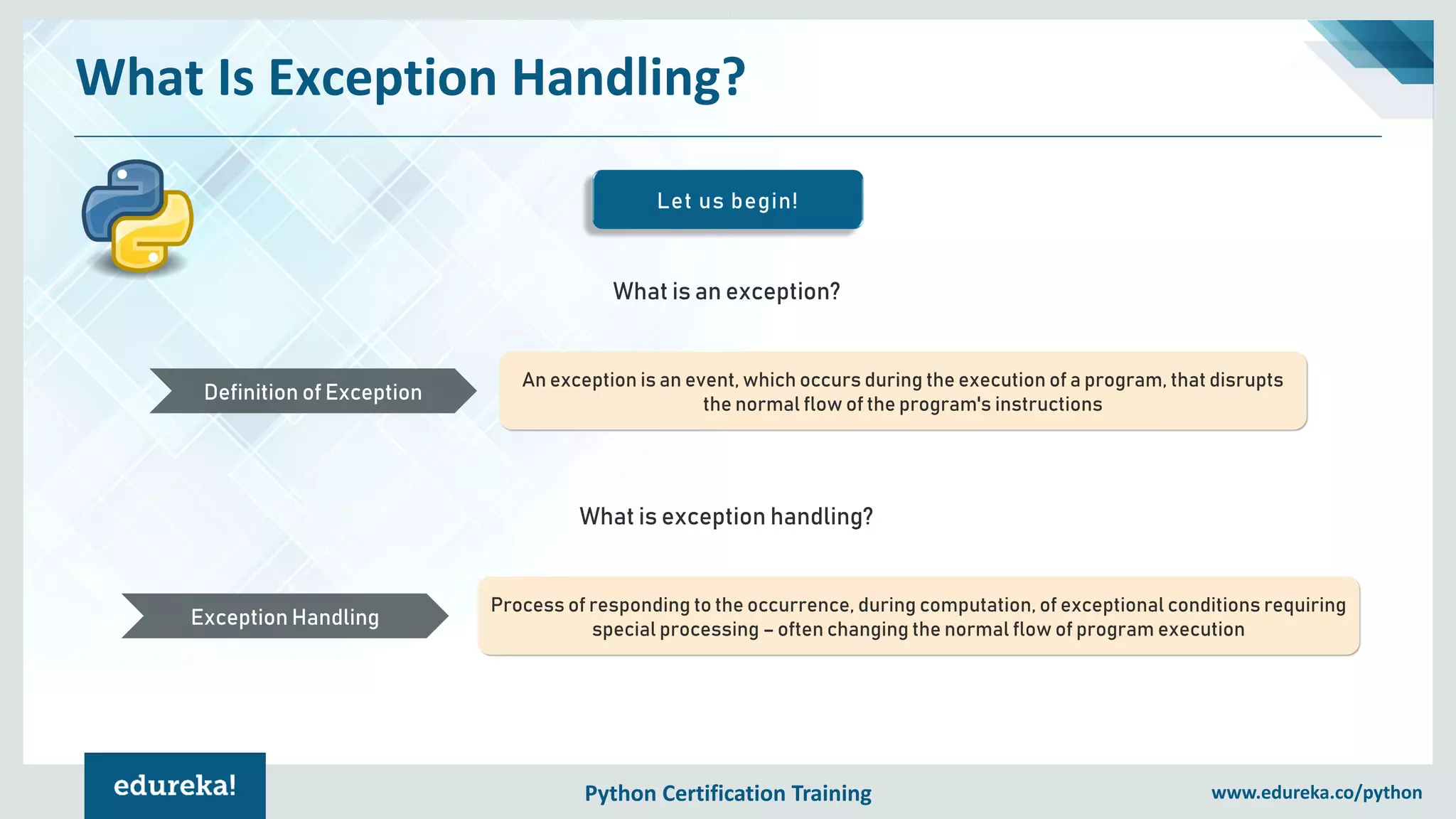
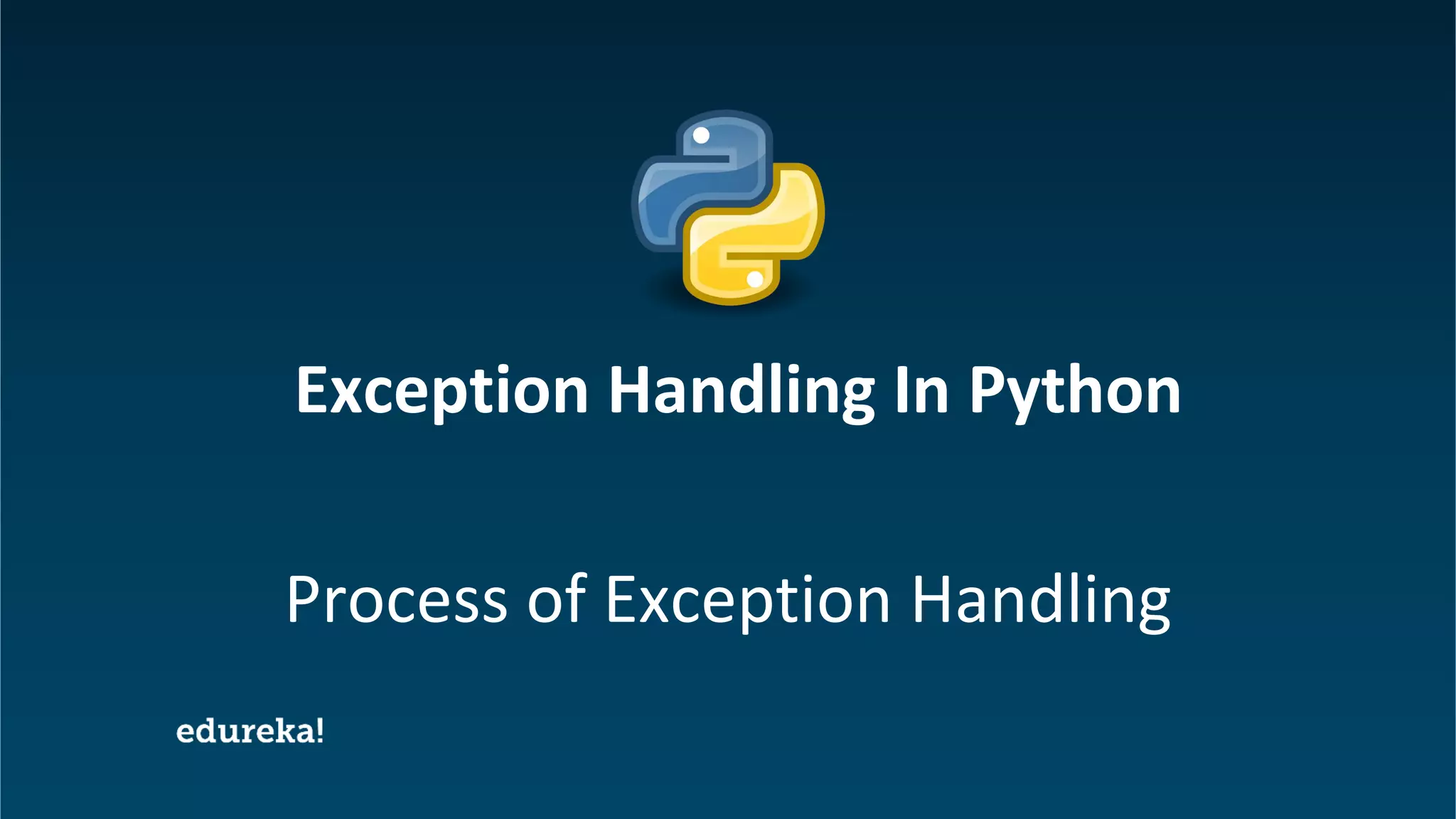
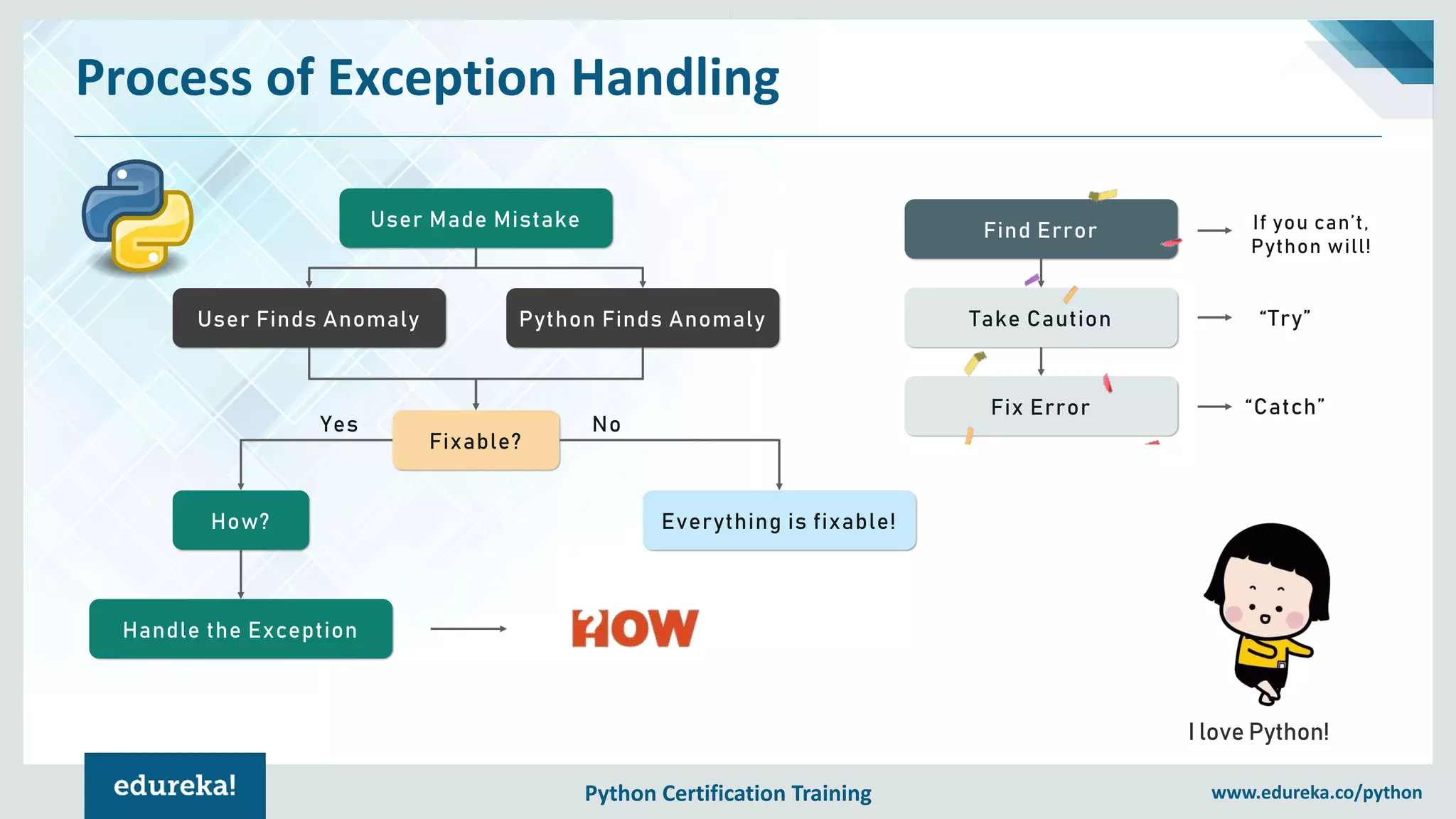

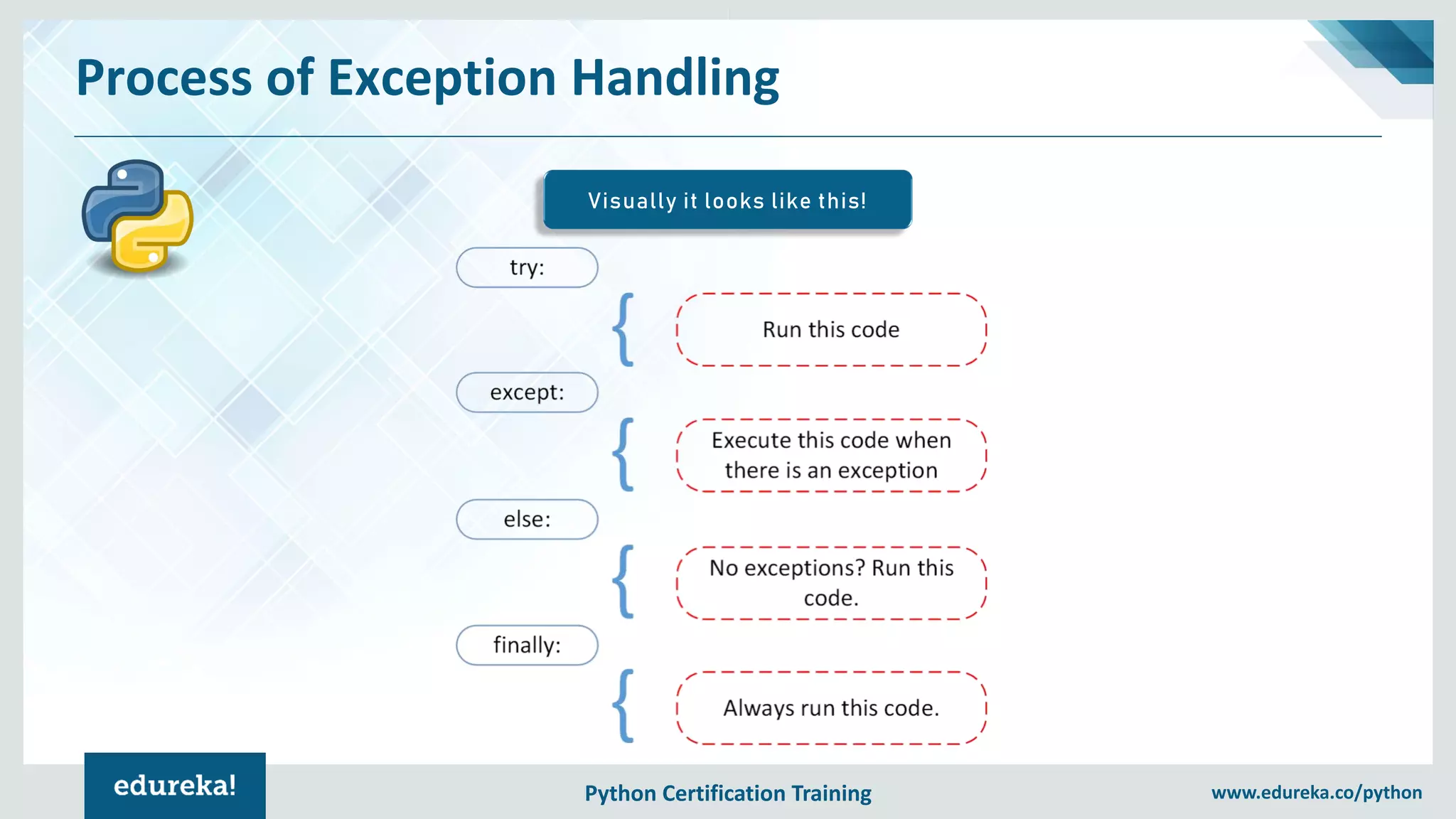
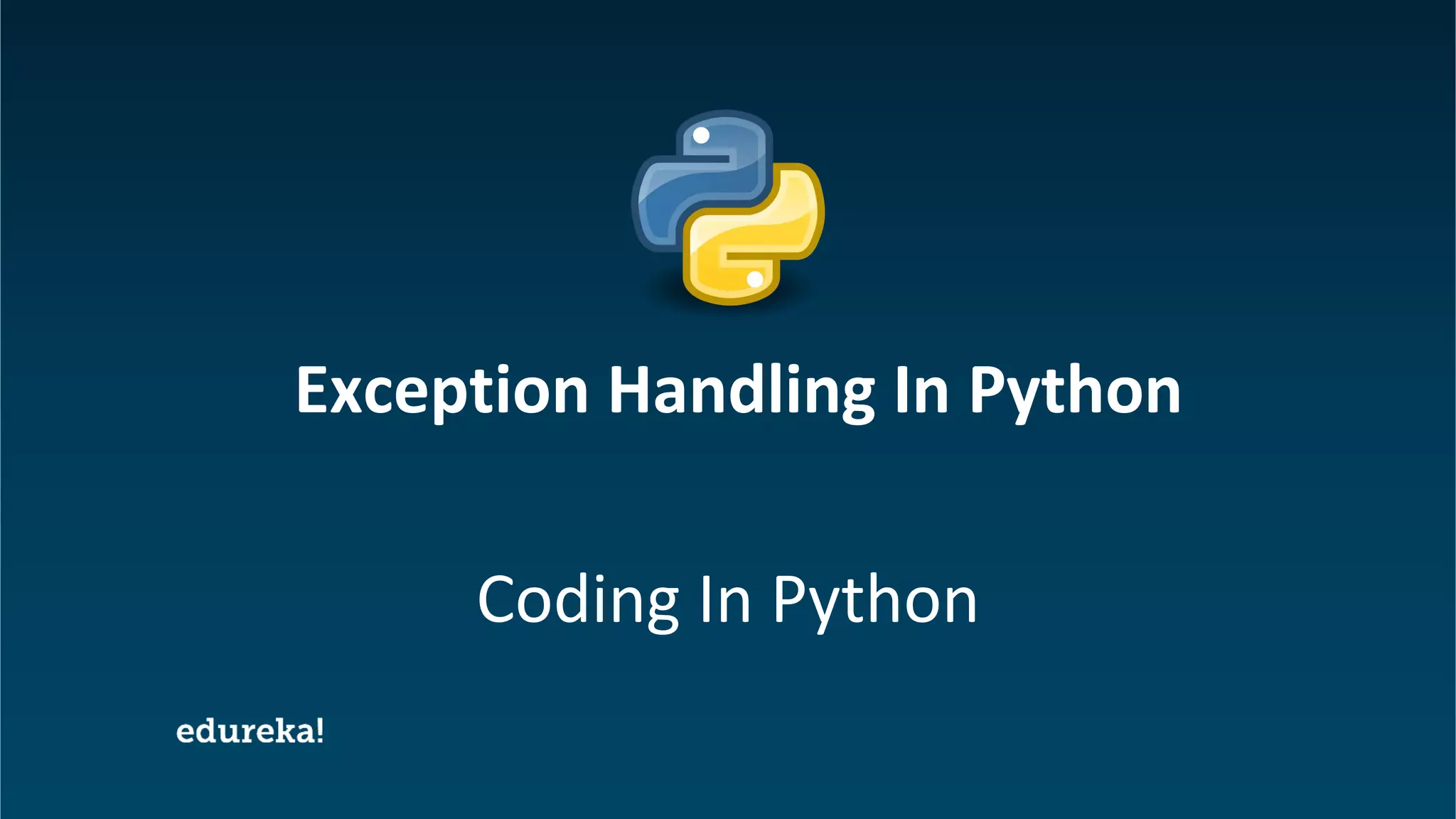
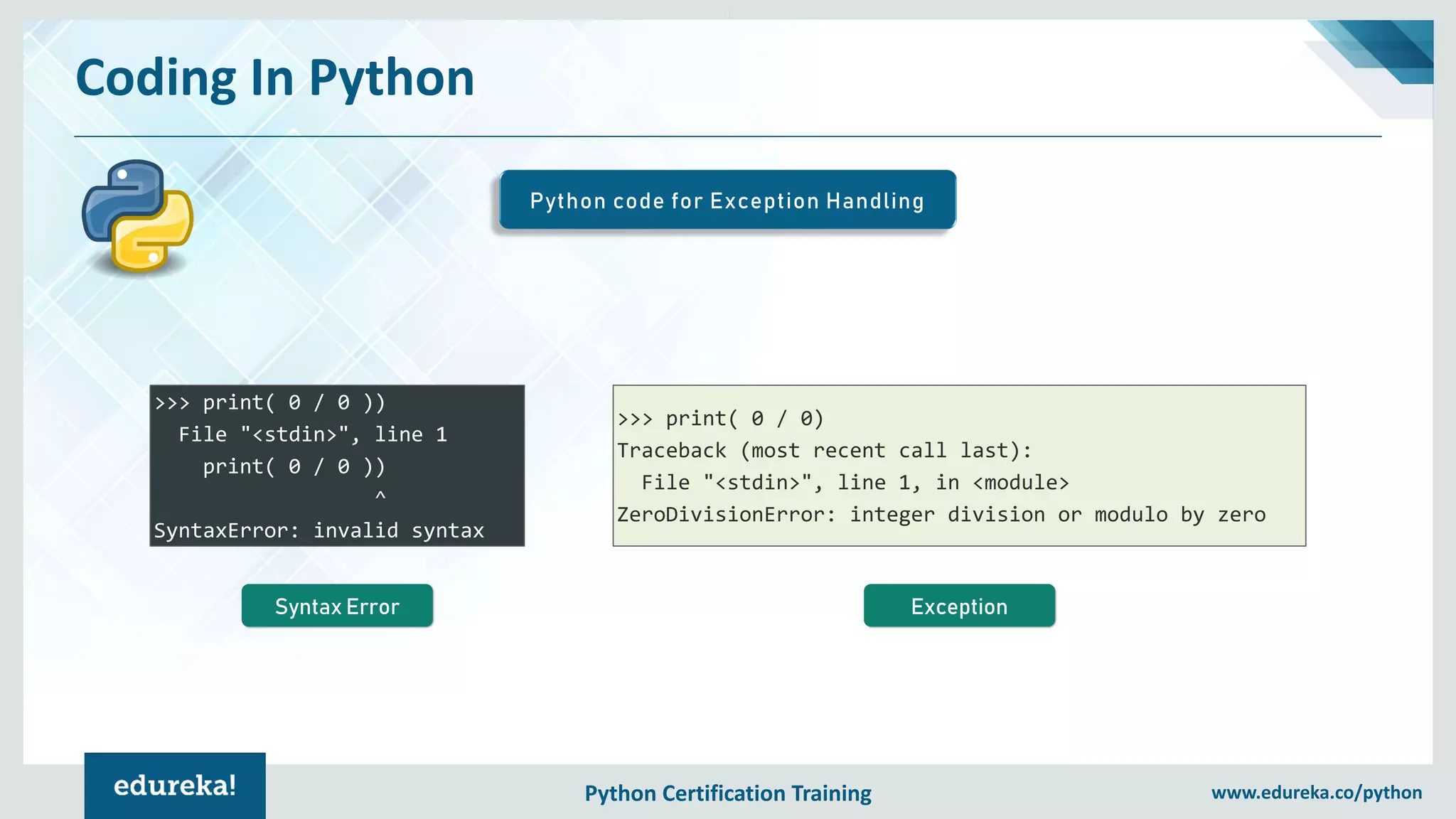
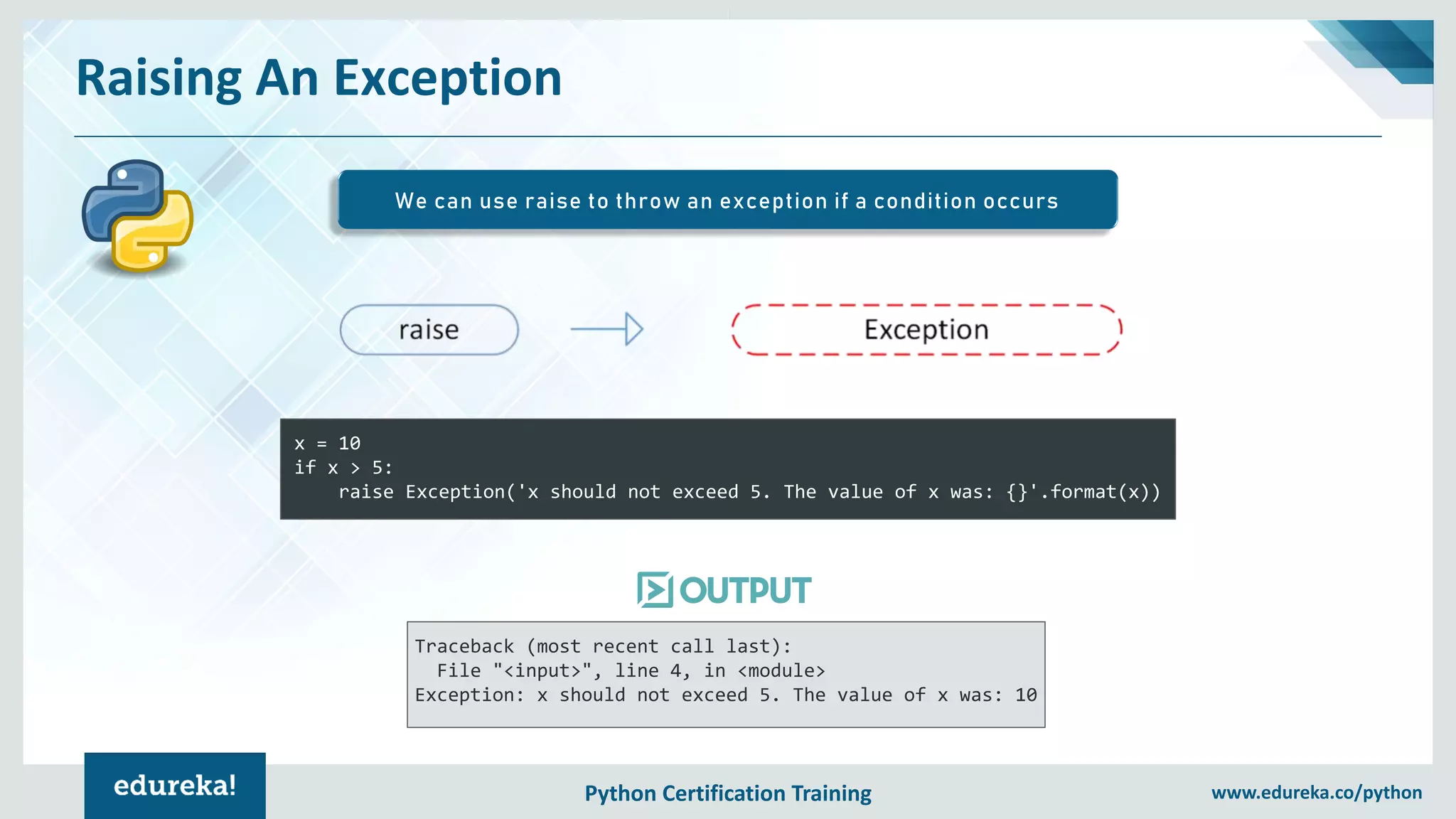


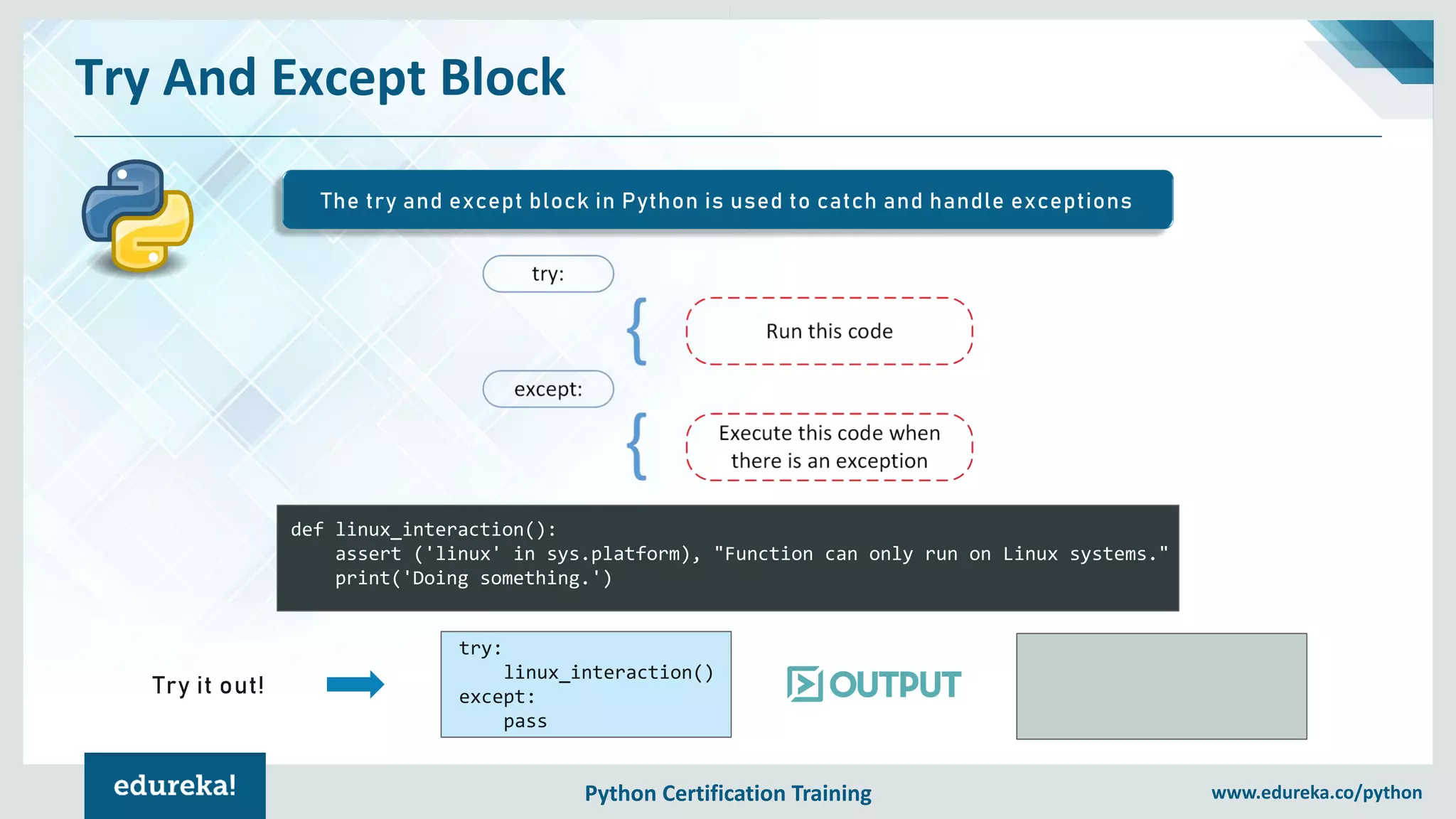

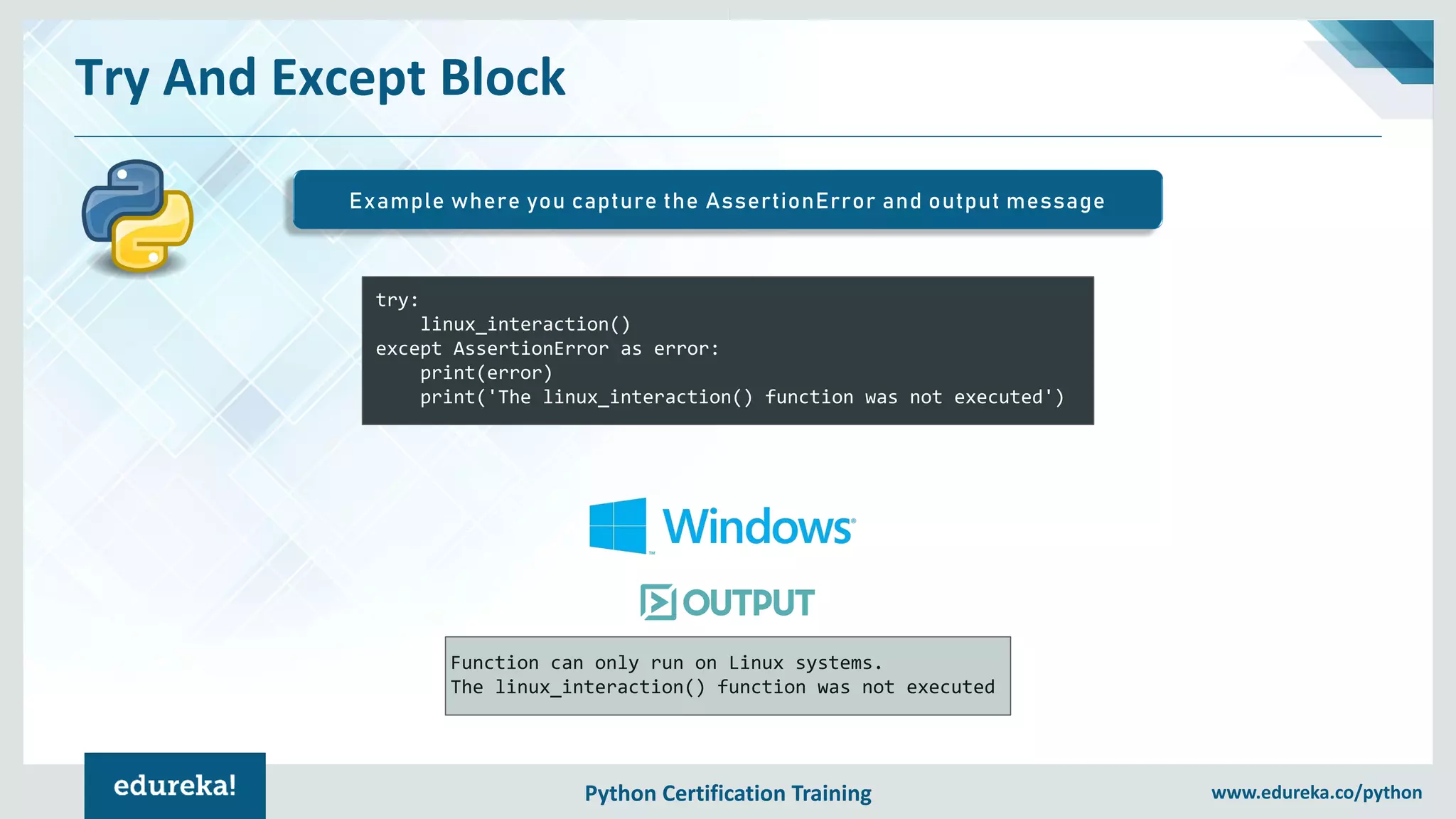
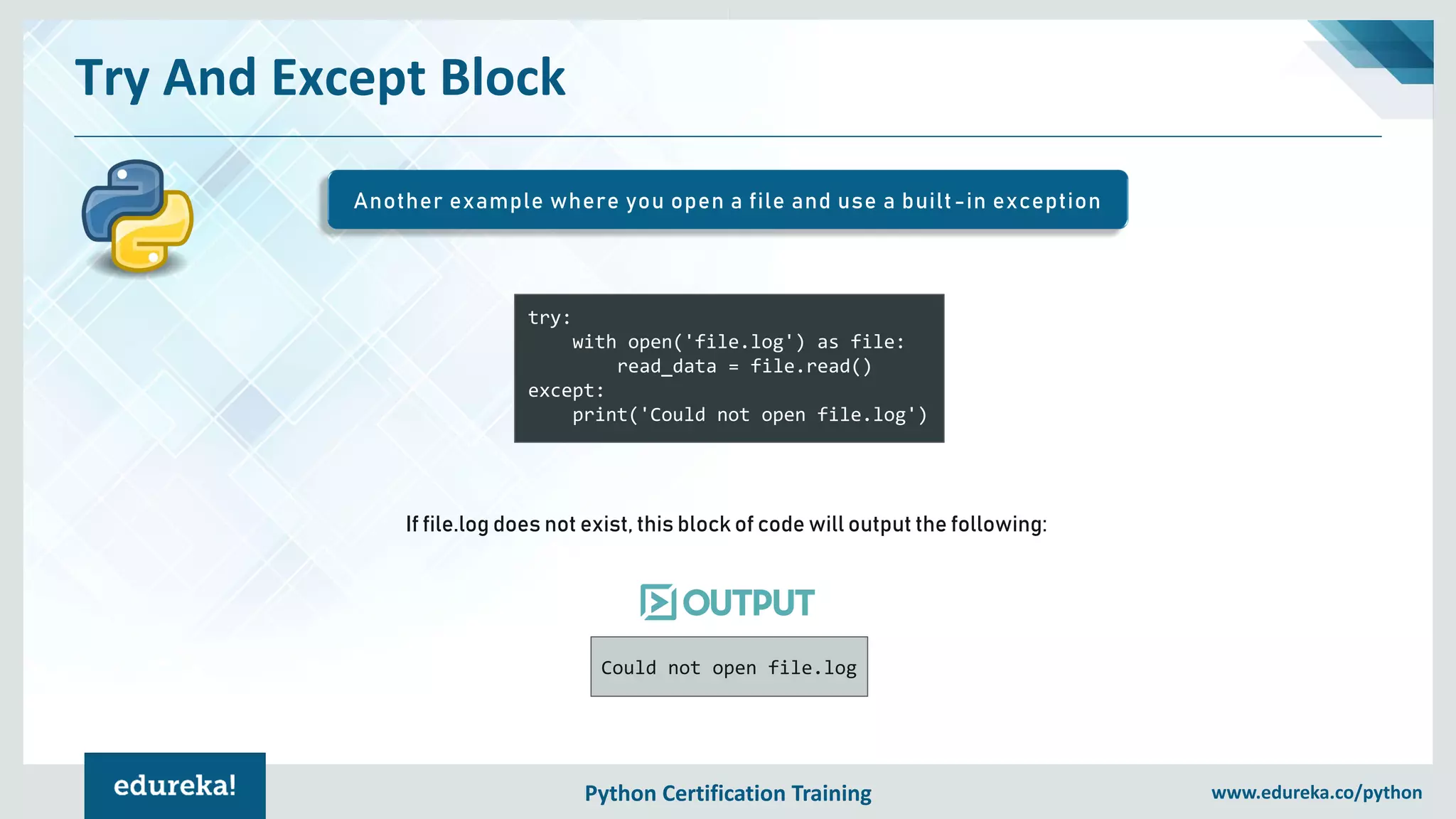
![Python Certification Training www.edureka.co/python Exception FileNotFoundError Raised when a file or directory is requested but doesn’t exist. Corresponds to errno ENOENT. Try And Except Block In the Python docs, you can see that there are a lot of built-in exceptions that you can use try: with open('file.log') as file: read_data = file.read() except FileNotFoundError as fnf_error: print(fnf_error) [Errno 2] No such file or directory: 'file.log' If file.log does not exist, this block of code will output the following:](https://image.slidesharecdn.com/exceptionhandlinginpython-190228055618/75/Exception-Handling-In-Python-Exceptions-In-Python-Python-Programming-Tutorial-Edureka-22-2048.jpg)
![Python Certification Training www.edureka.co/python Try And Except Block Another Example Case try: linux_interaction() with open('file.log') as file: read_data = file.read() except FileNotFoundError as fnf_error: print(fnf_error) except AssertionError as error: print(error) print('Linux linux_interaction() function was not executed') If the file does not exist, running this code on a Windows machine will output the following: Function can only run on Linux systems. Linux linux_interaction() function was not executed [Errno 2] No such file or directory: 'file.log'](https://image.slidesharecdn.com/exceptionhandlinginpython-190228055618/75/Exception-Handling-In-Python-Exceptions-In-Python-Python-Programming-Tutorial-Edureka-23-2048.jpg)
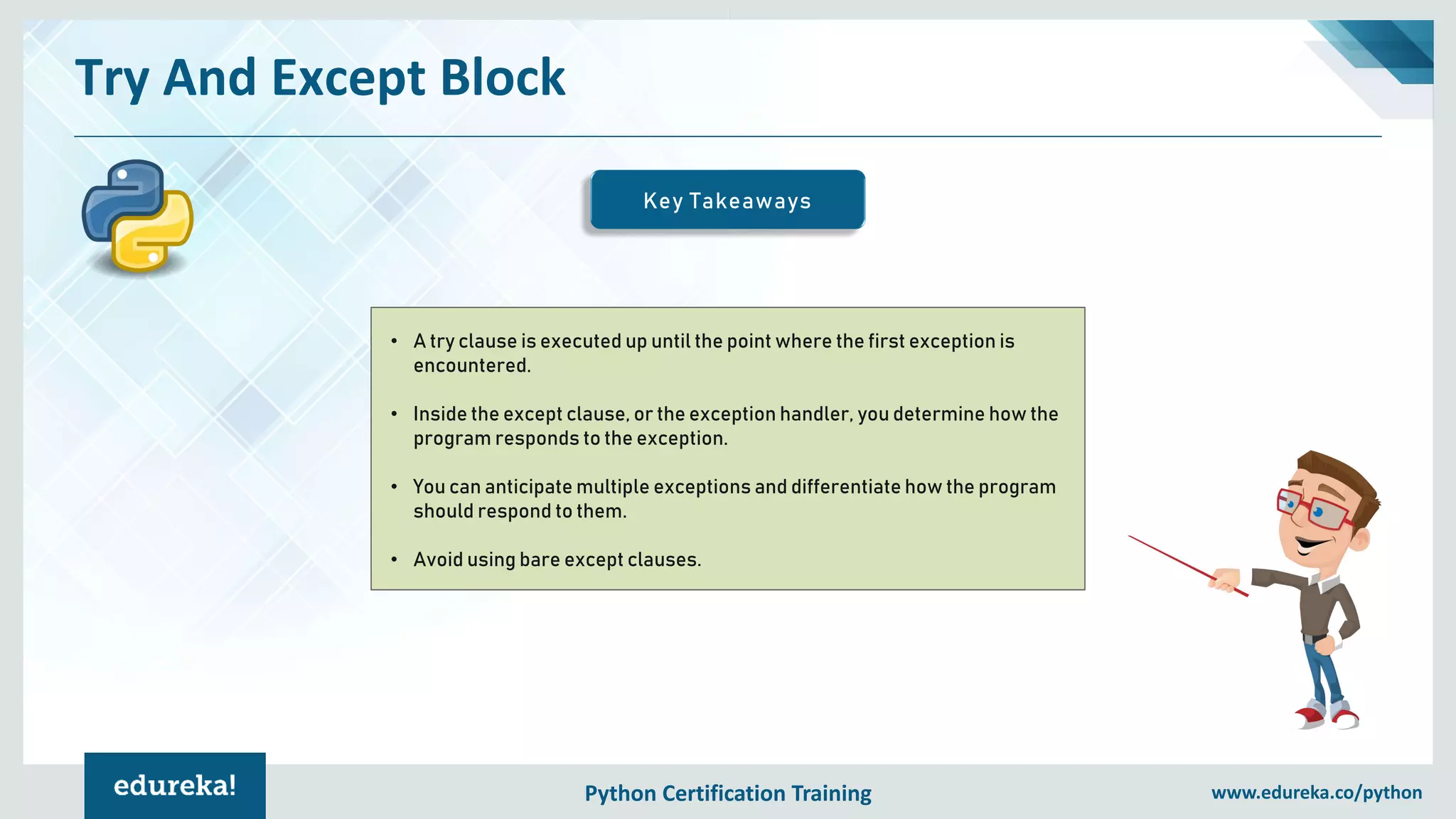
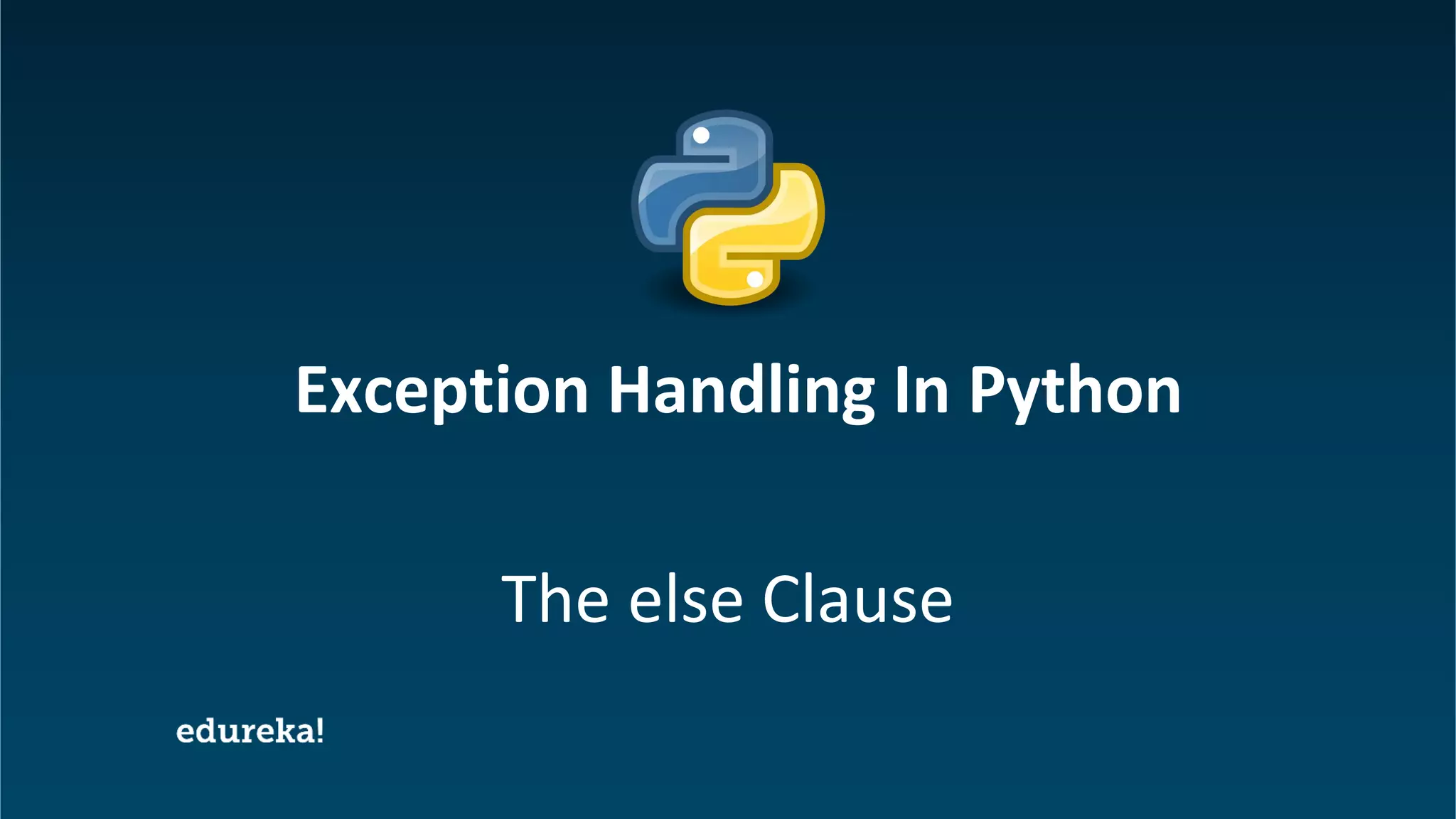


![Python Certification Training www.edureka.co/python The else Clause You can also try to run code inside the else clause and catch possible exceptions there as well: try: linux_interaction() except AssertionError as error: print(error) else: try: with open('file.log') as file: read_data = file.read() except FileNotFoundError as fnf_error: print(fnf_error) Doing something. [Errno 2] No such file or directory: 'file.log'](https://image.slidesharecdn.com/exceptionhandlinginpython-190228055618/75/Exception-Handling-In-Python-Exceptions-In-Python-Python-Programming-Tutorial-Edureka-28-2048.jpg)
